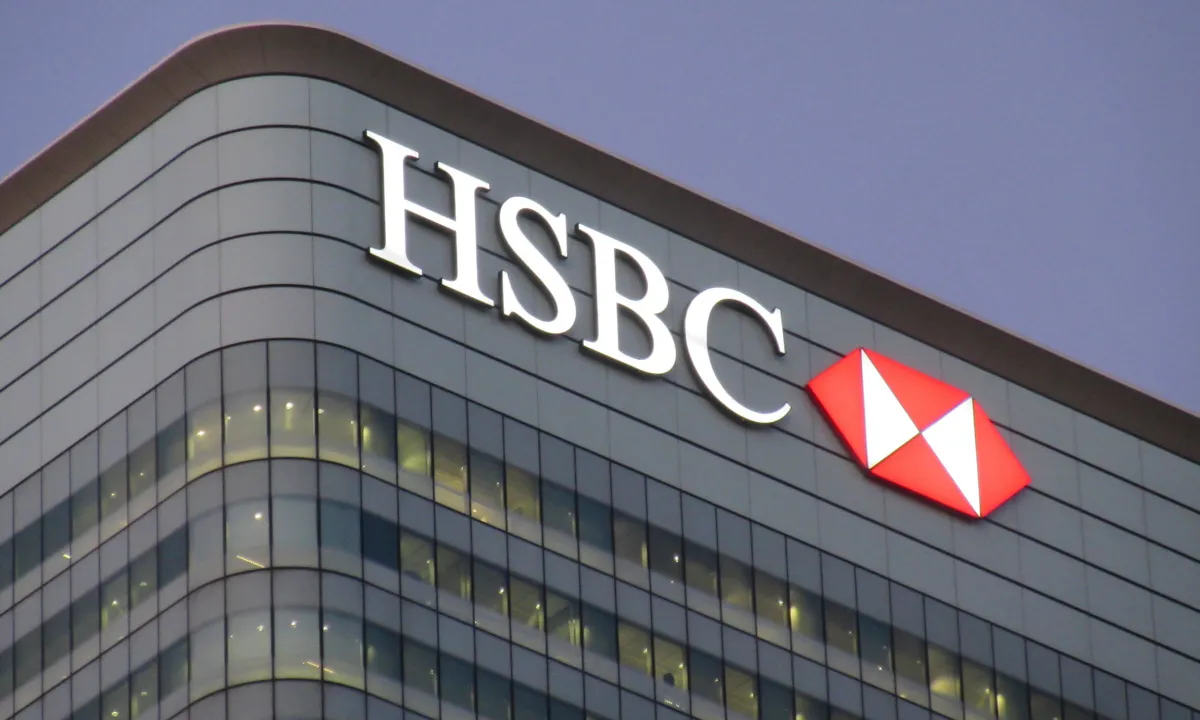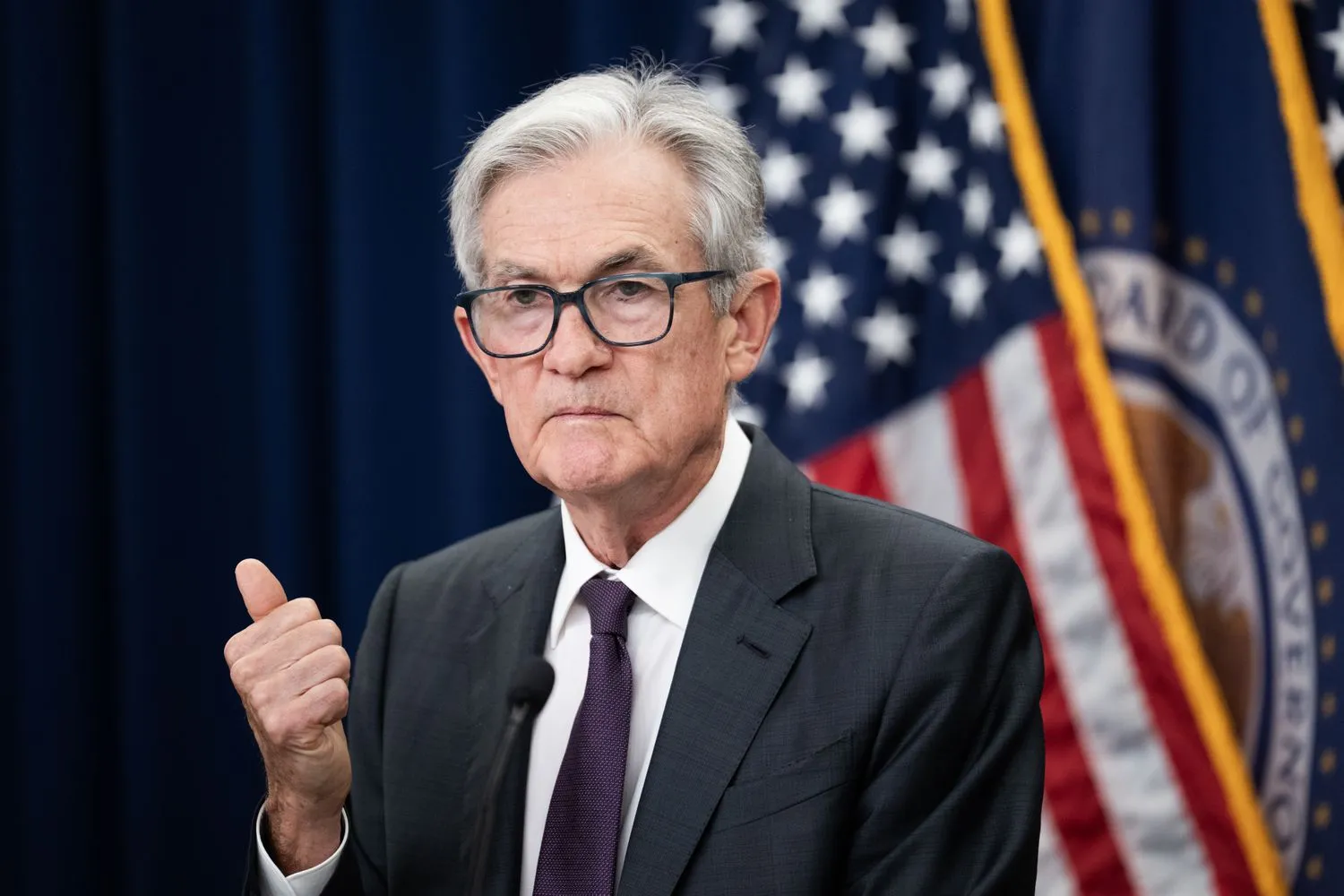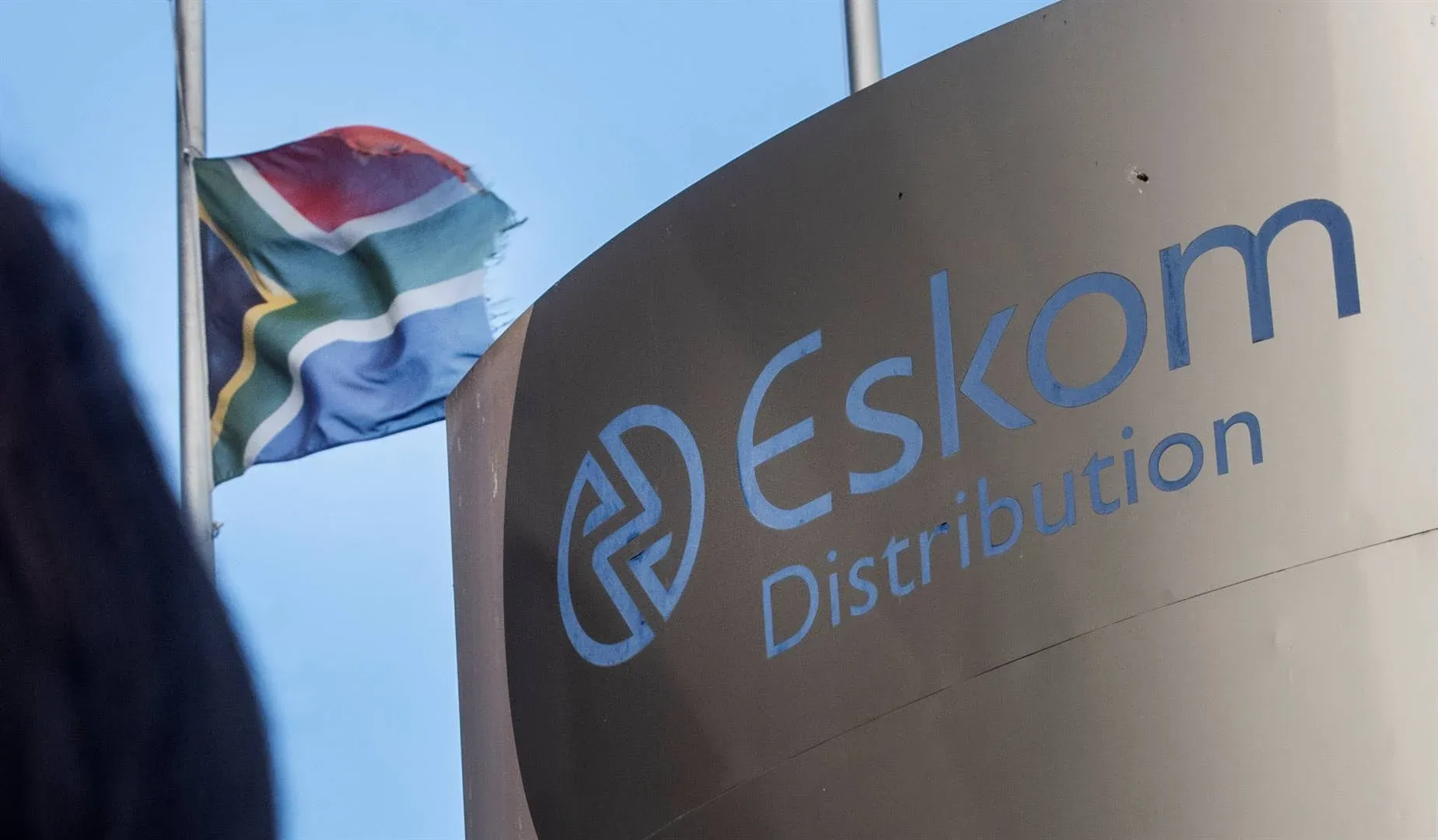In the dynamic landscape of global finance, major institutions are constantly balancing growth, profitability, and increasingly, their environmental and social responsibilities. HSBC, one of the world’s largest banking and financial services organizations, finds itself at a critical juncture, presenting a fascinating paradox for investors and market observers alike. In the first half of 2025, the banking giant reported a remarkable $54.1 billion in sustainable finance deals, marking a robust 19% year-on-year increase. This surge in green commitments, however, stands in stark contrast to a significant 25% decline in its pre-tax profits compared to the same period in 2024. This intriguing divergence raises a fundamental question: Is HSBC’s intensified pivot towards sustainable finance a strategic long-term value creator, or does it signal a deeper strategic inconsistency within a bank already grappling with complex macroeconomic headwinds and evolving regulatory pressures?
The Dual Narrative: Profit Pressures and Green Ambitions
HSBC’s recent performance paints a complex picture. On one hand, the bank is actively positioning itself as a leader in the burgeoning sustainable finance market, channeling significant capital into projects that support the global transition to a low-carbon economy. This aligns with a broader industry trend where financial institutions are increasingly recognizing the imperative of integrating Environmental, Social, and Governance (ESG) factors into their core business models. Yet, the simultaneous dip in traditional profitability metrics casts a shadow, prompting scrutiny into the sustainability of its overall financial health.
The core challenge for HSBC, and indeed for many established financial behemoths, lies in reconciling the often-divergent demands of short-term shareholder returns with long-term sustainability goals. While sustainable finance offers immense future potential, the immediate costs associated with transitioning business models, investing in new green technologies, and navigating a complex regulatory environment can impact current earnings. This is the tightrope walk HSBC is currently undertaking, and its success will depend on its ability to effectively manage these competing priorities.
Decoding the Sustainable Finance Surge
HSBC’s impressive $54.1 billion in sustainable finance deals in the first half of 2025 is not an isolated event but part of a multi-year commitment. This figure represents a 19% jump from 2024, contributing to a cumulative total of $447.7 billion since 2020. This substantial investment spans a diverse array of sectors crucial for climate action, including renewable energy projects, the development of green infrastructure, and initiatives designed to foster climate resilience. These efforts are directly aligned with HSBC’s publicly stated ambition to support the global net-zero transition, a critical undertaking in the fight against climate change.
The global sustainable finance market itself has seen significant growth, albeit with mixed signals in recent years. In 2024, sustainable bond issuance reached a record high, surpassing $1 trillion, and cumulative issuance since 2019 exceeded $5 trillion. This indicates a strong appetite from investors and corporations for financial instruments that support environmental and social objectives. However, sustainable funds also experienced a slowdown in inflows, suggesting a degree of investor caution and a growing demand for greater transparency and standardization in ESG products. Developing economies, particularly in Asia, are increasingly becoming hubs for sustainable finance policy measures, though they often face institutional and capacity gaps.
Despite its progress, HSBC’s cumulative sustainable finance total of $447.7 billion still falls short of its ambitious 2030 target, which aims to provide and facilitate between $750 billion and $1 trillion in sustainable finance and investments. This target, set in 2020, underscores the scale of the bank’s ambition but also highlights the significant ground still to cover. While the bank emphasizes its commitment to supporting clients in their transition journeys and leveraging its expertise for clean energy growth, a lack of detailed, sector-specific breakdowns in its public disclosures regarding these deals leaves some room for skepticism among analysts and environmental watchdogs. Investors are increasingly demanding granular data to assess the true impact and quality of “green” investments, moving beyond headline figures.
The ESG Credibility Chasm
Perhaps the most significant challenge to HSBC’s sustainability narrative has been its recent actions concerning climate commitments. The bank’s controversial exit from the Net-Zero Banking Alliance (NZBA) in 2025 sent ripples through the financial community. The NZBA, convened by the UN Environment Programme Finance Initiative, is a global coalition of banks committed to aligning their lending and investment portfolios with net-zero greenhouse gas emissions by 2050. HSBC cited concerns about the scope and enforceability of the alliance’s commitments, particularly regarding the complex issue of Scope 3 (financed) emissions, as reasons for its departure.
This move, however, was widely interpreted as a step back from its climate leadership. Coupled with a decision to delay its own 2030 emissions reduction targets to 2050 for its operational and supply chain emissions (Scope 1, 2, and 3), the bank has drawn sharp criticism. Environmental advocacy groups and even some of its own clients, such as the British green energy firm Ecotricity, expressed deep disappointment, questioning the bank’s genuine commitment to climate action. HSBC’s revised targets now aim for a 40% reduction in operational and supply chain emissions by 2030, with full net-zero pushed back by two decades. The bank stated that achieving complete net zero by 2030 would necessitate significant reliance on carbon offsets, which it aims to avoid, and cited “slower global transitions in energy mix diversification, technological advancements, and market demands for climate solutions” as contributing factors.
Adding to these concerns, HSBC’s ESG ratings have seen a noticeable decline. Sustainalytics, a leading independent ESG research and ratings firm, reclassified HSBC as a “medium risk” with a score of 20.4, placing it 207th out of 1,025 global banks. ESG ratings are crucial tools for investors, providing an external assessment of a company’s environmental, social, and governance performance and risks. A lower ranking can signal increased exposure to ESG-related risks, potentially impacting investor confidence and capital allocation decisions. The importance of these ratings has grown significantly as investors increasingly use them to inform their portfolios, identify risks, and engage with companies on sustainability issues.
The broader context of banks exiting climate alliances or revising targets is also important. Several large U.S. banks have also withdrawn from the NZBA, often citing similar concerns about legal and regulatory risks associated with net-zero commitments, as well as the improving economics of fossil fuel development. This trend suggests a complex interplay of genuine decarbonization challenges, evolving regulatory landscapes, and, in some cases, a response to rising anti-ESG sentiment, particularly in certain political climates. The optimistic view is that banks will continue to address climate change but shift towards “de-risking” their portfolios rather than solely focusing on “decarbonization.”
Navigating Financial Headwinds: Profits, Buybacks, and Capital Strength
While the sustainable finance narrative unfolds, HSBC’s traditional financial performance has faced significant pressures. The 25% decline in pre-tax profits in the first half of 2025 reflects a challenging global macroeconomic environment. Major headwinds include persistent inflation, which impacts operating costs and consumer spending; rising interest rates in key markets, which can affect borrowing demand and credit quality; and escalating geopolitical tensions, particularly trade disputes between major economies, which disrupt global supply chains and dampen business investment. These factors have collectively squeezed profit margins across the banking sector.
Despite this overall profit slump, HSBC’s Q1 2025 results did show a remarkable 317% quarter-on-quarter jump in pre-tax profit to $9.48 billion. This quarterly rebound was primarily driven by strong performances in its wealth management and corporate banking divisions, particularly in its International Wealth and Premier Banking (IWPB) and Hong Kong segments, as well as robust activity in Foreign Exchange and Debt and Equity Markets within its Corporate and Institutional Banking (CIB) segment. However, this quarterly surge was largely attributed to the non-recurrence of significant one-off impacts from disposals in Canada and Argentina in Q1 2024, which had previously weighed down profits. Excluding these “notable items,” constant currency profit before tax actually increased by $1.0 billion, indicating underlying operational strength in certain areas.
In response to the profit pressures and to bolster investor confidence, HSBC has actively pursued strategies to enhance shareholder returns. This includes a substantial $3 billion share buyback program and a $16.57 billion capital reclassification. Share buybacks, where a company repurchases its own stock from the open market, reduce the number of outstanding shares. This typically has a positive impact on earnings per share (EPS) because the same amount of earnings is now distributed among fewer shares, making each share appear more valuable. This strategy, along with the capital reclassification, has indeed propped up HSBC’s stock, which has surged an impressive 21% in 2025, outperforming rivals like JPMorgan.
However, the sustainability of these gains remains a key concern. The profit decline, even with the quarterly rebound, suggests that underlying macroeconomic challenges and significant $1.8 billion in restructuring costs through 2026 could continue to pressure earnings. These restructuring efforts, aimed at streamlining operations and improving efficiency, are necessary for long-term health but create short-term financial burdens.
HSBC’s Common Equity Tier 1 (CET1) ratio, a critical measure of a bank’s financial strength and ability to absorb losses, stood at a healthy 14.8% as of March 2025. The CET1 ratio compares a bank’s core equity capital (common shares, retained earnings, etc.) against its risk-weighted assets. A higher CET1 ratio indicates a stronger capital buffer, providing resilience against unexpected financial shocks. While HSBC’s ratio is robust and provides a significant buffer, prolonged earnings stagnation or further unexpected costs could put pressure on this key metric, especially if the bank’s growth initiatives do not materialize as expected. Regulators closely monitor CET1 ratios, and maintaining a strong position is crucial for market confidence and operational flexibility.
The Contrarian’s Lens: Why HSBC Might Still Shine
Despite the complexities and criticisms, a compelling contrarian investment case can be made for HSBC. A significant portion of this argument rests on the bank’s deep entrenchment in Asia. Approximately 80% of HSBC’s profits are concentrated in Asia, a region that continues to exhibit robust economic growth and surging demand for wealth management services and green infrastructure development. While China’s economic slowdown and geopolitical tensions pose risks, the broader Asia-Pacific region remains a powerhouse of global growth. Countries across Southeast Asia and India continue to expand rapidly, driving demand for banking services, particularly in the burgeoning middle class and among high-net-worth individuals. The Asian Development Bank’s July 2025 outlook, while noting some downward revisions due to US tariffs, still forecasts developing Asia and the Pacific’s growth at 4.7% in 2025, highlighting its continued dynamism.
HSBC’s strategic focus on Asia positions it to capitalize on these long-term trends. The region’s massive infrastructure needs, coupled with a growing emphasis on sustainable development, create significant opportunities for green finance. HSBC’s partnerships with organizations like the World Resources Institute and the World Wildlife Fund to accelerate climate solutions are not just about reputation; they are designed to identify and drive future revenue streams by facilitating impactful green projects.
Furthermore, HSBC’s valuation metrics suggest potential undervaluation. Its Price-to-Tangible Book Value (P/TB) ratio of 1.07x is notably well below the sector average of 2.32x. The P/TB ratio is a key metric for value investors, comparing a company’s market price to its tangible book value per share (which excludes intangible assets like goodwill). A P/TB ratio close to or below 1.0x can indicate that the market is valuing the company’s shares at or below the value of its physical assets, suggesting a potential bargain. This low ratio, combined with a healthy 5.2% dividend yield in a generally low-yield environment, adds significant appeal for income-focused investors looking for stable returns. If the bank can effectively navigate its ESG challenges and maintain its robust capital ratios, the ongoing share buyback program could further boost its Earnings Per Share (EPS) by an estimated 2% annually, enhancing shareholder value.
Historical data also lends some support to a tactical investment approach. Since 2022, HSBC has demonstrated a 78.57% win rate in the three days following earnings releases, with an average return of 1.01% over that short window. While longer-term performance is less consistent (e.g., a 50% win rate in the 10-day period), these short-term dynamics could reinforce the case for a disciplined buy-and-hold strategy, particularly if the bank’s earnings continue to meet or exceed market expectations. This suggests that the market often reacts positively to immediate financial disclosures, even amidst broader strategic questions.
The Road Ahead: Risks and Regulatory Realities
Despite the contrarian appeal, the risks associated with investing in HSBC are significant and multifaceted. The most prominent is the erosion of trust stemming from its NZBA exit and weakened climate targets. This has not only alienated sustainability-focused clients and investors but also exposed the bank to increased reputational and legal risks. Examples like its 2023 loan to a German energy company involved in a coal mine expansion and a 2024 Indian steel deal directly contradict its stated sustainability narrative, inviting severe backlash from environmental groups and ethical investment funds. These instances highlight the persistent challenge of reconciling legacy business practices with ambitious new green commitments.
Adding to this, regulatory scrutiny in the U.S. and Europe regarding banks’ ESG commitments is intensifying. Regulators are increasingly focused on “greenwashing” – the practice of making misleading claims about environmental friendliness – and ensuring that banks’ climate pledges are backed by concrete actions. In Europe, 2025 marks a critical year for banks to integrate ESG risks more deeply into their frameworks, with regulators like the European Central Bank (ECB) and European Banking Authority (EBA) planning more rigorous stress tests and scrutinizing actual climate risk exposures. Litigation risks related to climate commitments are also on the rise.
Furthermore, the rise of anti-ESG sentiment in certain political and investment circles, particularly in the U.S., complicates the landscape. While a recent report suggests that anti-ESG proposals at shareholder meetings are gaining minimal traction (averaging just 2% support in the 2025 US proxy season), the political rhetoric can create an environment of uncertainty and potential regulatory pushback against aggressive ESG policies. This creates a delicate balancing act for global banks like HSBC, which must navigate differing expectations across various jurisdictions.
HSBC’s strategic reallocation of resources and focus towards Asia, while offering growth opportunities, also exposes it to regional vulnerabilities. China’s economic slowdown, particularly in its property sector, and ongoing geopolitical tensions in the South China Sea and with Taiwan, could significantly impact the bank’s profitability in its most crucial market. While wealth management is a high-margin growth area, it is also inherently cyclical and highly sensitive to global economic shifts and market volatility. Any significant downturn in Asian markets could disproportionately affect HSBC’s overall performance.
Balancing Act: Profit, Purpose, and the Path Forward
HSBC’s journey towards integrating sustainable finance while maintaining profitability is clearly a work in progress. The $54.1 billion in sustainable finance deals in 2025 is undeniable evidence of momentum and a commitment to this burgeoning market. However, the bank’s inconsistent climate commitments, particularly its exit from the NZBA and the delay in its net-zero targets, coupled with specific controversial financing decisions, remain a significant drag on its ESG credibility.
For investors, the central question revolves around HSBC’s ability to genuinely reconcile its financial objectives with its environmental and social responsibilities without compromising either. Can it successfully navigate the complexities of decarbonizing its vast portfolio while simultaneously delivering strong shareholder returns? The answer will likely dictate its long-term success.
A cautious investment approach might involve dollar-cost averaging into the stock, particularly given its apparent undervaluation (as indicated by its P/TB ratio) and the potential for buyback-driven EPS inflation. This strategy mitigates risk by spreading investments over time. However, for investors who prioritize strict ESG integrity and alignment with robust climate action, a much closer scrutiny of HSBC’s actions, rather than just its rhetoric, will be essential. They will be looking for concrete evidence of a consistent, long-term commitment to decarbonization across its entire financing portfolio, not just in new “green” deals.
The upcoming Q2 2025 earnings report, due on July 30, will be a critical test. Investors and analysts will be closely watching for signs of profit recovery, the impact of restructuring costs, and any further clarity on the bank’s revised climate strategy and how it plans to regain trust. It will be a crucial indicator of whether HSBC can truly balance profit and purpose, transforming its current paradox into a sustainable and profitable future. The market will be looking for strong signals that the bank’s actions are aligning with its stated ambitions, especially as global regulatory and investor pressure on ESG performance continues to mount. The journey is fraught with challenges, but the potential rewards for a bank that successfully navigates this transition are substantial.
Ready to take your career to the next level? Join our dynamic courses: ACCA, HESI A2, ATI TEAS 7 , HESI EXIT , NCLEX – RN and NCLEX – PN, Financial Literacy!🌟 Dive into a world of opportunities and empower yourself for success. Explore more at Serrari Ed and start your exciting journey today! ✨
photo source: Google
By: Montel Kamau
Serrari Financial Analyst
1st August, 2025
Article, Financial and News Disclaimer
The Value of a Financial Advisor
While this article offers valuable insights, it is essential to recognize that personal finance can be highly complex and unique to each individual. A financial advisor provides professional expertise and personalized guidance to help you make well-informed decisions tailored to your specific circumstances and goals.
Beyond offering knowledge, a financial advisor serves as a trusted partner to help you stay disciplined, avoid common pitfalls, and remain focused on your long-term objectives. Their perspective and experience can complement your own efforts, enhancing your financial well-being and ensuring a more confident approach to managing your finances.
Disclaimer: This article is for informational purposes only and does not constitute financial advice. Readers are encouraged to consult a licensed financial advisor to obtain guidance specific to their financial situation.
Article and News Disclaimer
The information provided on www.serrarigroup.com is for general informational purposes only. While we strive to keep the information up to date and accurate, we make no representations or warranties of any kind, express or implied, about the completeness, accuracy, reliability, suitability, or availability with respect to the website or the information, products, services, or related graphics contained on the website for any purpose. Any reliance you place on such information is therefore strictly at your own risk.
www.serrarigroup.com is not responsible for any errors or omissions, or for the results obtained from the use of this information. All information on the website is provided on an as-is basis, with no guarantee of completeness, accuracy, timeliness, or of the results obtained from the use of this information, and without warranty of any kind, express or implied, including but not limited to warranties of performance, merchantability, and fitness for a particular purpose.
In no event will www.serrarigroup.com be liable to you or anyone else for any decision made or action taken in reliance on the information provided on the website or for any consequential, special, or similar damages, even if advised of the possibility of such damages.
The articles, news, and information presented on www.serrarigroup.com reflect the opinions of the respective authors and contributors and do not necessarily represent the views of the website or its management. Any views or opinions expressed are solely those of the individual authors and do not represent the website's views or opinions as a whole.
The content on www.serrarigroup.com may include links to external websites, which are provided for convenience and informational purposes only. We have no control over the nature, content, and availability of those sites. The inclusion of any links does not necessarily imply a recommendation or endorsement of the views expressed within them.
Every effort is made to keep the website up and running smoothly. However, www.serrarigroup.com takes no responsibility for, and will not be liable for, the website being temporarily unavailable due to technical issues beyond our control.
Please note that laws, regulations, and information can change rapidly, and we advise you to conduct further research and seek professional advice when necessary.
By using www.serrarigroup.com, you agree to this disclaimer and its terms. If you do not agree with this disclaimer, please do not use the website.
www.serrarigroup.com, reserves the right to update, modify, or remove any part of this disclaimer without prior notice. It is your responsibility to review this disclaimer periodically for changes.
Serrari Group 2025












